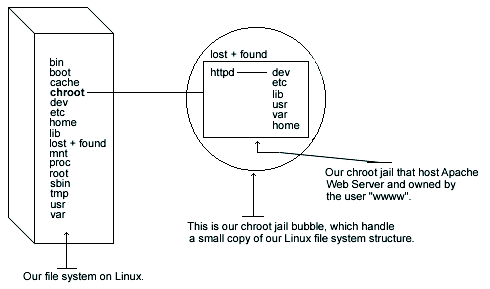
Caddy is an open-source, lightweight web server designed to serve both static and dynamic sites. It's free and open source.
It supports HTTP/2 (and experimental HTTP/3), and is built for security. It's also designed to be scalable, and use as little state as possible.
Caddy supports HTTPS automatically and comes with many features which make it easier to use. The web-based admin interface, the modular architecture and the support for multiple hosts are all included.
The config file is human-readable and easy to write, and it's also extensible with plugins. Caddy's config file allows you add new features and customize it to fit any situation.
Config updates are graceful, even on Windows. These updates are saved locally to disk and can be applied even after a reboot.

Caddy rotates logs automatically (after 100MiB) so that it doesn't take up space on your hard drive.
Caddy offers greater memory protection than servers written by C. It is capable of handling large traffic volumes.
Moreover, it's able to serve multiple sites simultaneously on the same port using its multiplexing feature. It also supports multiple SSL certificates and automatic renewal of them.
It's highly extensible, and it supports a variety of languages and frameworks. You can use a plugin-based system to add long-running web services, standards, and useful features.
Caddy can therefore be built to fit your specific needs and installed on different systems. It is compatible with containers as well as non-containerized server.
Caddy’s command line interface is extensible. With a JSON RESTful API, you can configure it with any application. And its built-in scheduling cron allows you to automate your updates. This makes the software ideal for cloud deployments, as well as other large-scale deployments.

Despite its flexibility and versatility, Caddy isn't strictly open source, and it may not be suitable for commercial uses. Caddy is great for hosting blogs or websites.
Installation
Installing Caddy on your local computer is a simple process. You simply install the server binary and configure it to run automatically when you boot. This includes adjusting ownership and permissions so that only the root user can read and modify files in the folder you want to serve from.
You need an IP and a domain name to run your server. For this, go to DigitalOcean.com and create a Personal Access Token with Read and Write Permissions for your Account.
Download the static binary for the platform you are using from the GitHub page. To install and start Caddy, follow the instructions found on the website. Once you're ready, you can start Caddy by executing the server command in a terminal window.
FAQ
Can I use a template or framework on my website?
Yes! Many people use pre-built templates or frameworks when creating a website. These templates contain all the code needed to display information on your page.
These templates are the most in-demand:
WordPress - The most popular CMS
Joomla - Another popular open source CMS
Drupal – An enterprise-level solution used by large organizations
Expression Engine - Yahoo's proprietary CMS
Hundreds of templates are available for each platform, so finding the right one should be easy.
What Should I Add to My Portfolio?
These are the things you should include in your portfolio:
-
You can also see examples of your previous work.
-
If applicable, links to your website
-
You can also find links to your blog.
-
Links to social media pages.
-
These links will take you to the online portfolios of designers.
-
Any awards you have been given.
-
References.
-
You can also send us samples of your work.
-
These links will help you communicate with clients.
-
These are links that show you're open to learning new technologies.
-
Links showing that you're flexible.
-
These links show your personality.
-
Videos showing your skills.
What is a website static?
A static site can be hosted anywhere. This includes Amazon S3, Google Cloud Storage. Windows Azure Blob storage. Rackspace Cloudfiles. Dreamhost. Media Temple. In addition, you can also deploy a static site to any platform that supports PHP, such as WordPress, Drupal, Joomla!, Magento, PrestaShop, and others.
Static web pages can be easier to maintain as they don’t need to send requests back and forward between servers. They load quicker because they don't need to send requests back and forth between servers. For these reasons, static web pages are often better for smaller companies that don't have the time or resources to manage a website properly.
Can I use HTML & CCS to build my website?
Yes, you can! Basic knowledge of web design and programming languages such as HTML (Hyper Text Markup Language), and CSS (Cascading Stil Sheets) is required. These two languages allow you to create websites that can then be viewed by anyone who has access to your internet connection.
What kind of websites should I make?
Your goals will determine the answer to this question. Your website should be able to sell products online. This will allow you to build a successful business. To make this happen, you'll need a reliable eCommerce website.
Blogs, portfolios, as well as forums are some other popular web types. Each of these requires different skills and tools. To set up a blog for instance, you'll need to learn about blogging platforms like Blogger and WordPress.
Once you have chosen a platform, it is also important to determine how you can customize the appearance of your site. There are many templates and themes that are free for each platform.
Once you have decided on a platform, you are able to start building your website by adding content. Pages can include images, videos, text and links.
When you are ready to launch your new website, you can publish it online. Visitors can view your site online once it has been published.
How To Make A Static Web Site
There are two options available to you when building your first static website.
-
Content Management System (a.k.a. WordPress): WordPress: This software can be downloaded and installed on your computer. This will allow you to create an essential website.
-
Create a static HTML website: You'll need to code your HTML/CSS code. If you have a good understanding of HTML, this is not difficult.
You might consider hiring an expert to design your website if you are planning to build a large site.
Start by choosing option 2.
What is website design software?
Web design software is used to create web pages and other digital media by graphic artists, photographers and illustrators.
There are two main types for website design software. Desktop apps are installed locally on your computer and require you to install additional software on your computer. Cloud-based solutions can be hosted remotely over the internet. They are ideal for mobile users as they don't require additional software.
Desktop Applications
Desktop applications may have more advanced features than cloud-based solutions but they aren’t always necessary. Some people prefer working exclusively on a desktop app, as they find it easier. Others like to use the same tool regardless of whether they are working on a laptop or a smartphone.
Cloud-Based Solutions
Web designers who wish to save time or money should consider a cloud-based option. These services make it possible to edit any type document from anywhere with an Internet connection. This means that you can work on your tablet while waiting to brew your coffee.
If you decide to use a cloud service, you will still need a license. You don't have to buy additional licenses for upgrading to the latest version.
You can use these programs to create web pages if you own a copy of Photoshop, InDesign, Illustrator, or another Adobe product.
Statistics
- It's estimated that in 2022, over 2.14 billion people will purchase goods and services online. (wix.com)
- In fact, according to Color Matters, a signature color can boost brand recognition by 80%. There's a lot of psychology behind people's perception of color, so it's important to understand how it's used with your industry. (websitebuilderexpert.com)
- When choosing your website color scheme, a general rule is to limit yourself to three shades: one primary color (60% of the mix), one secondary color (30%), and one accent color (10%). (wix.com)
- Did you know videos can boost organic search traffic to your website by 157%? (wix.com)
- The average website user will read about 20% of the text on any given page, so it's crucial to entice them with an appropriate vibe. (websitebuilderexpert.com)
External Links
How To
How can you tell which CMS is better?
Two types of Content Management System are available. Web Designers typically use static HTML and dynamic CMS. WordPress is the most used CMS. But when you want to make your site look professional and well-organized, you should consider using Joomla! Joomla! is an open-source CMS that allows you to create any type of website design. It's very easy to use and configure. Joomla includes thousands of templates and extensions so you don't have to hire a programmer to build your site. Joomla is also free to download and install. There are many benefits of choosing Joomla for your project.
Joomla is a powerful tool that makes it easy to manage all aspects of your website. Joomla offers many features, such as a drag and drop editor, multiple templates support, image manager blog management, news feed, eCommerce, and a blog management. Joomla is an excellent choice for anyone looking to build a website without learning how to code.
Joomla supports all devices. You can easily create websites for multiple platforms with Joomla.
There are many reasons Joomla is preferred over WordPress. Some of them include:
-
Joomla is Open Source Software
-
Easy to Install and Configure
-
You will find thousands of ready-made extensions and templates
-
You can download and use the software free of charge
-
Supports Almost All Devices
-
The Powerful Features
-
Good Support Community
-
Very Secure
-
Flexible
-
Highly Customizable
-
Multi-Lingual
-
SEO Friendly
-
Responsive
-
Social Media Integration
-
Mobile Optimized